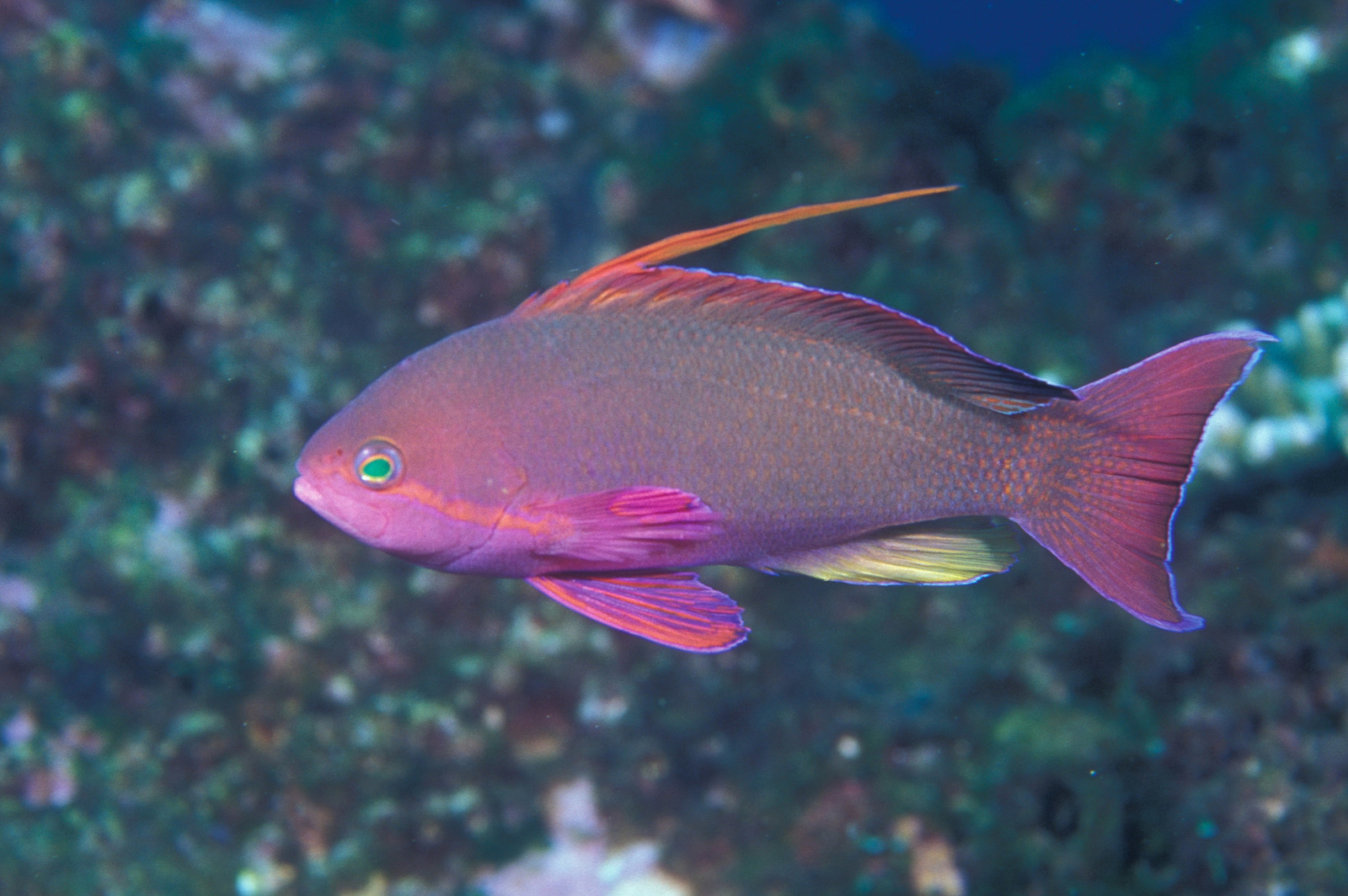- Classification
- ACTINOPTERYGII
- PERCIFORMES
- SERRANIDAE
- Pseudanthias
- squamipinnis
Orange Basslet, Pseudanthias squamipinnis (Peters 1855)

A male Scalefin Anthias, Pseudanthias squamipinnis, at South Solitary Island, New South Wales, May 1998. Source: Ian Shaw / iNaturalist.org. License: CC by Attribution-NonCommercial
Males are purplish-pink with a pink to orange streak from the eye to the pectoral-fin base, a red patch on the pectoral fin, and pale spots on a blue anal fin. They also have an elongate third dorsal-fin ray, and elongate upper and lower caudal-fin rays. Females are golden-orange with a violet streak from below the eye to the pectoral-fin base.
Some authors consider that Pseudanthias squamipinnis is restricted to the Western Indian Ocean, and that the species found in Australia is P. cheirospilos.
Orange Basslet, Pseudanthias squamipinnis (Peters 1855)
More Info
|
Distribution |
Rowley Shoals to Scott Reef, Western Australia, Ashmore Reef, Timor Sea, and the far northern Great Barrier Reef, Queensland, and reefs in the Coral Sea, to Montague Island, New South Wales, with juveniles further south; also Christmas Island in the eastern Indian Ocean, and the Lord Howe Province and Norfolk Island in the Tasman Sea. Elsewhere the species is widespread in the tropical Indo-west Pacific. Forms large aggregations above coral outcrops and patch reefs in clear lagoons, reef channels, and on outer reef slopes. |
|
Features |
Dorsal fin X, 15-17; Anal fin III, 6-7. |
|
Feeding |
Large schools are often seen feeding on zooplankton in the water column above the reef. |
|
Biology |
A protogynous hermaphrodite. Males are very territorial, and dominate a harem of females and juveniles. Female to male sex change is induced by the absence or removal of males from social groups, and sex-reversal occurs over a period of 2-4 weeks. |
|
Remarks |
Kuiter (2004) regards this species to be restricted to the Western Indian Ocean. |
|
Etymology |
The specific name squamipinnis is from the Latin squamus (= scale) and pinnis (= fin), in reference to scaly sheath covering the fins. |
|
Species Citation |
Serranus (Anthias) squamipinnis Peters 1855, Monatsberichte der Königlichen Preussischen Akademie der Wissenschaften zu Berlin 1855: 429. Type locality: Mozambique. |
|
Author |
Bray, D.J. 2025 |
|
Resources |






